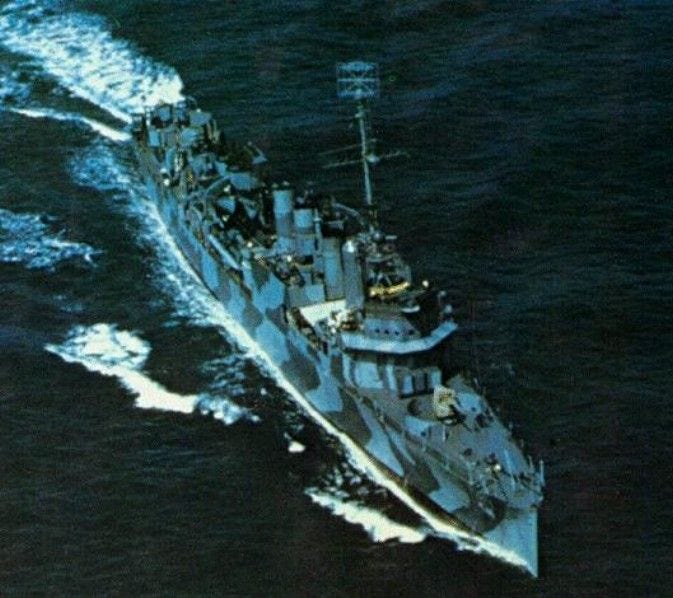First U-Boat kill for US Navy
14th April 1942: The second 'Happy Time' for U-Boats operating off the East coast of America begins to draw to a close as US Navy intensify operations

German U-Boats had been creating havoc on the east coast of the USA where they preyed on unescorted merchant vessels in regular shipping lanes. Gradually the U.S. Navy and Coast Guard were introducing a range of deterrent measures including convoys.
Just after midnight on the night of the 13th/14th April off the coast of North Carolina the destroyer USS Roper picked up a fast moving surface vessel on its radar, first thinking it was a small Coast Guard craft. As they closed in the enemy appeared and was dealt with ruthlessly1:
When the distance had been reduced to 300 yards the vessel cut sharply to starboard. At this instant, using the 24" searchlight, she was finally identified as a large submarine. A camouflage preponderantly light in color was noted. The submarine continued to turn to starboard inside the turning circle of this ship. The searchlight was held on the submarine, and fire was opened first with the machine gun battery and then with the 3" battery.
The machine guns, particularly #1, cut down the submarine personnel rushing to man their gun. A direct hit in the conning tower near the water line was made by #5 - 3" gun as the submarine commenced to sink. Orders were given to fire a torpedo at the submarine, but she disappeared before it was fired. The submarine apparently was scuttled inasmuch as she settled slowly and went down stern first. About forty of her crew were on deck and soon sighted in the water.
‘A barrage of eleven depth charges was laid by use of racks, Y-guns, and K-guns, based on an eye estimate of the submarine's location plus an excellent sound contact.’
A barrage of eleven depth charges was laid by use of racks, Y-guns, and K-guns, based on an eye estimate of the submarine's location plus an excellent sound contact. The bearing of the submarine remained almost constant and the speed was negligible. Wreckage could not be detected because of the darkness. On two occasions this ship passed near the survivors, but the fact that German submarines frequently work in pairs made the conduct of any rescue work before daylight far too dangerous to risk.
Search in the general area was continued until daybreak. At that time the PBY plane commanded by Lieutenant C.V. Horrigan, U.S.N.R., cooperated in an intensive sight search. Suspicious oil slicks and bits of debris were investigated. The plane dropped one charge and this ship dropped two.
At 0706, by means of smoke floats dropped from two planes which appeared on the scene, the attention of this ship was called to bodies in the water. At 0717 this vessel placed the first of two lifeboats in the water in charge of an officer, and commenced recovering bodies and floating articles.

At 0727 an airship was observed approaching. She was asked to circle the ship as a protection against submarines while the boats were in the water. This she did. Communication by flashing light was made without difficulty, and on one occasion the airship idled her motors and communicated by megaphone. A maximum of seven planes of various types appeared on the scene at one time. Near the end of the recovery operation a British trawler stood over and was asked to watch for submarines.

Somewhat controversially there were no survivors from the U-Boat and 29 bodies were recovered later. The reasons for continuing with the depth charging with men in the water were made clear in the report.

Commanding officer, Lieutenant Commander Hamilton W. Howe received the Navy Cross for the engagement.

From the Action Report submitted by the Executive Officer of the USS Roper, the full original is available on U Boat Archive.


